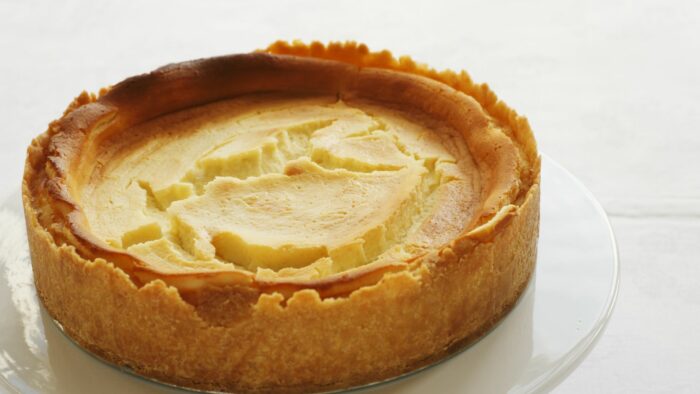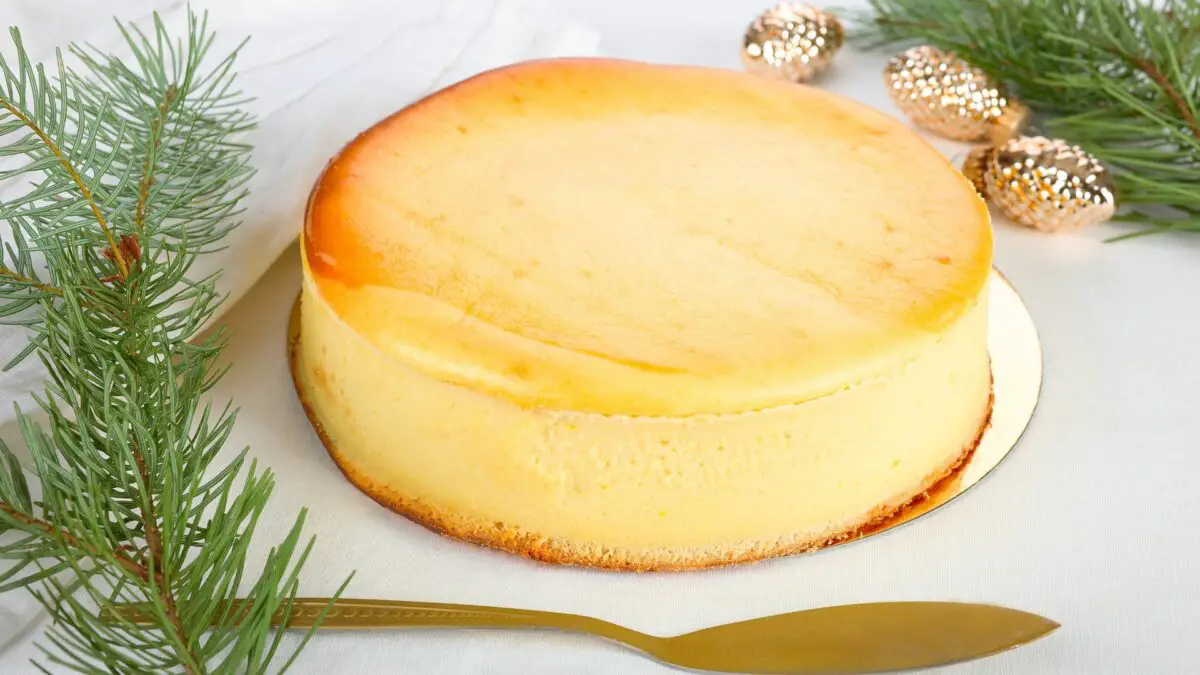By Lindy Van Schalkwyk, last updated on October 8, 2024
Today, we will take a look at how to fix cheesecake mistakes. We’ll discuss the 4 biggest mistakes, how to prevent them, and how to fix the problem.
This guide is suited for all levels of bakers. And, all our solutions are extremely easy to follow and apply. So read on to learn how you can make the best cheesecake every time!
Common Cheesecake Mistakes And What Causes Them
Baking cheesecake is actually really easy. But for some reason, more often than not, they come out with some flaw or another. It can be infuriating! Especially when the recipe pretty much says “beat the ingredients together and bake.”
Unfortunately, cheesecake is an incredibly delicate baked good. Yes, it is very easy to make. But that doesn’t mean there aren’t any rules.
So, today we will explore some of the most common mistakes people make when it comes to baking cheesecakes. We will take a look at what causes these issues and of course, how to fix cheesecake mistakes.
But as we always say, it’s better to prevent than to fix. So, always use our easy and foolproof guide to help you get the perfect creamy cheesecake every time!
1. How to fix cheesecake mistakes – Cracks!
Cracks forming in a cheesecake are one of the biggest issues people come across. And unfortunately, there are a couple of common mistakes you can make. If you are lucky, you only have a few tiny cracks. But if you are unlucky (as we’ve been numerous times) you end up with the cake almost split in two!
So, what causes cracks? They can either be caused when you expose them to sudden temperature changes, drafts, or if you haven’t lubricated the pan enough.

How to prevent cracks
Firstly, make sure that your springform cake pan is properly lubricated on the sides. If it isn’t, the cheesecake will stick. As it contracts (when it is cooling), the crack forms.
Secondly, you should always properly cool your cheesecake. Switch off your oven and slightly open the door (an inch will do). Then, leave the cheesecake to cool for 1 hour. Then, remove the cheesecake and continue cooling it at room temperature for another hour. Only when it has completely cooled should you wrap it and set it in the fridge.
When it comes to avoiding sudden temperature changes, that also means you should open the oven door before at least 80% of the recommended baking time has elapsed.
And finally, when cooling the cheesecake, you should never place it in an area where drafts will reach it. The cheesecakes’ texture is very delicate, especially when it is still hot.
How to fix cracks in a cheesecake
The best way to fix a crack in your cheesecake is to fill it with the topping or frosting you are using. Naturally, that also means you will need to use more topping or frosting.
There isn’t an easy fix. And, bigger cracks are more difficult to cover up. So again, preventing this issue is better than trying to fix it.
An alternative option is to use cheesecake to make other desserts. You can check out some ideas here.
2. How to prevent a cheesecake from sinking
Cheesecake that sinks in has two possible causes. The first is incorrect mixing and the second is drafts.
If you overmix the batter, you are incorporating too much air. When the air bubbles are heated, they expand and cause the cheesecake to rise. Eventually, though, they will burst and the cheesecake will lose all of its structural support.
Then again, just like with cracks, a draft can also cause the cheesecake to lose its structural support and fall in.
How to prevent
The best way to prevent over-mixing is by following the steps exactly. You should always only mix the ingredients until they are just combined.
This is especially important when you fold in aerated ingredients like egg whites or cream.
And, for avoiding drafts, just keep it in an area where there are no drafts. It’s as simple as that.
How to fix cheesecake mistakes
As with the cracks, filling in the crater with extra topping or frosting is the best way to cover up the problem.
In this case, using a frosting is much easier. That’s because it is easier to make a big batch of frosting than, for example, white chocolate ganache. Not to mention it will save you a ton of money as well!
3. How to keep a cheesecake from browning
Sometimes a cheesecake will start browning way before it has finished baking. This is caused by a too-high baking temperature.
Now you may be thinking, “Well, the recipe says to bake at x.” You aren’t wrong. More often than not the recipe is correct. On average, you will bake a cheesecake at 320-360ºF (160-180ºC).
However, just because you set the oven to that temperature doesn’t mean it is actually at that temperature. Oven hot spots are a real problem when it comes to baking cheesecake. And often, it causes the cheesecake to brown too much.
How to avoid over-browning
The best way to prevent the cheesecake from browning too much is to control the temperature and hot spots. You can check out this video and eliminate hot spots from your oven.
If you see the surface browning too much, cover that area with some aluminum foil.
You should also never bake with the grill setting. Use the bottom and hot heating element.
How to fix cheesecake mistakes
The only way you can fix an overly browned spot is to cut it off. You can cover it with frosting or a topping, but that won’t take away the burnt flavor.
4. Undercooking cheesecake
Undercooked cheesecake is another problem we are often confronted with. This obviously happens when you haven’t baked the cheesecake for long enough. But don’t worry, it is easy to fix and prevent entirely.
How to fix undercooked cheesecake (by preventing it)
The way you prevent this from happening goes hand in hand with fixing the problem: DO NOT REMOVE THE CHEESECAKE. If your cheesecake hasn’t completely cooked in the center, don’t take it out of the oven.
You can test the doneness of the cheesecake by doing a jiggle test or testing the internal temperature. A cheesecake should be 165ºF (74ºC) when it is fully baked.
In Conclusion: How To Fix Cheesecake Mistakes
This tutorial on how to fix cheesecake mistakes is very easy and as we’ve mentioned, foolproof. The hardest part of making cheesecake is when you bake and cool it. Just don’t be impatient and trust the lengthy process. It’s worth the wait!
If you enjoyed this article, make sure to go check out our other education guides as well.

Lindy Van Schalkwyk is a culinary specialist with a background in Advanced Cooking, Advanced Pâtisserie, Media Communications and Nutrition. She has gained invaluable experience in the culinary industry having worked in some of the top restaurants in Africa in 2016 and 2017. Her expertise in nutrition has enabled her to develop recipes for special dietary needs. In 2018, Lindy began working in the Food Media industry, focusing on recipe development, recipe writing, food writing and food styling.

